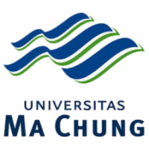The Coping Behavior in Booth Tarkington’s The Magnificent Ambersons: An Individual Psychological Approach
Abstract
The object of this paper is the novel Ambersons by Newton Booth Tarkington. This study focuses on the major question of how George Amberson Minafer, the major character, copes with his problem. The researcher employs a qualitative method in analyzing the novel. Following the data gathering and analysis, the writer draws two conclusions: first, George Amberson Minafer copes with his problem through changing his behavior, from negative behavior to positive one. He becomes more optimistic, independent and caring for his family. Second, George Amberson Minafer copes his problem through his action. He has the courage to admit his mistake. He asks forgiveness to the man that he hurt most.
References
Berman, D. and Daniel Mark Epstein. (1987). The Heath Guide to Literature. Toronto: D.C. Heath and Company Lexington.
Feist, J. (1985). Theories of Personality. Japan: Holt, Rinehart and Winston Holt- Saunders.
Dicaprio, N. (1974). Personality Theories. Guides to living. New York: W.B Sounders Company.
Hall, C. S. and Lindzey Gardner. (1970). Theories of Personality Eds. 2. New York: John Wiley and Sons, Inc.
Hall, C. S. and Lindzey Garner. (1981). Theories of Personality Eds. 3. New York: John Wiley and sons, Inc.
Hall, C. S. and Lindzey Garner. (1985). Introduction Theories of Personality. California: John Wiley and Sons, Inc.
Hjelle, L. A. and Daniel J Zieglar. (1981). Personality Theories. Basic assumptions, research, and application. McGraw-Hill International Edition.
Hornby, A. S. (1995). Oxford Advanced Learner’s Dictionary of Current English. Oxford University Press.
Kennedy, X. J. (1991). Literature. An Introduction to Fiction, Poetry and Drama. Harper Collins Publisher.
Lukens, R. J. (1995). Critical Handbook of Children’s Literature. Harper Collins Publisher.
Schultz, D. (1990). Theories of Personality. California: Brook/Cole Publishing Company Pacific Groove.
Tarkington, B.. (1918). The Magnificent Amberson. Double day & Co., Inc.
Open Access Policy
This is an open access journal which means that all content is freely available without charge to the users or their institution. Users are allowed to read, download, copy, distribute, print, search, or link to the full texts of the articles, or use them for any other lawful purpose, without asking prior permission from the publisher or the author. This is in accordance with the BOAI definition of open access.
![]() This work is licensed under a Creative Commons Attribution-ShareAlike 4.0 International License.
This work is licensed under a Creative Commons Attribution-ShareAlike 4.0 International License.

















